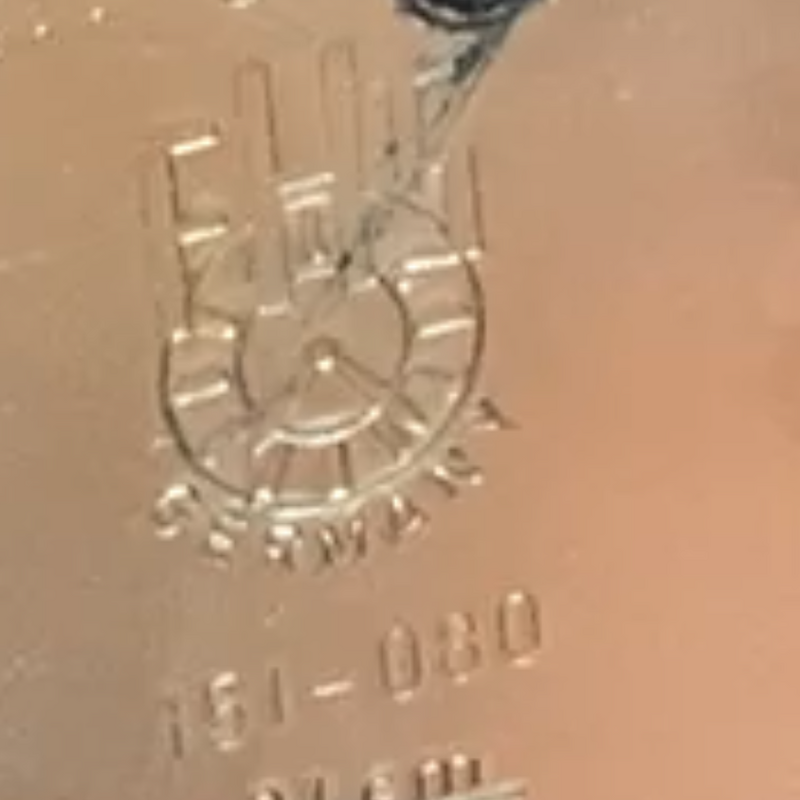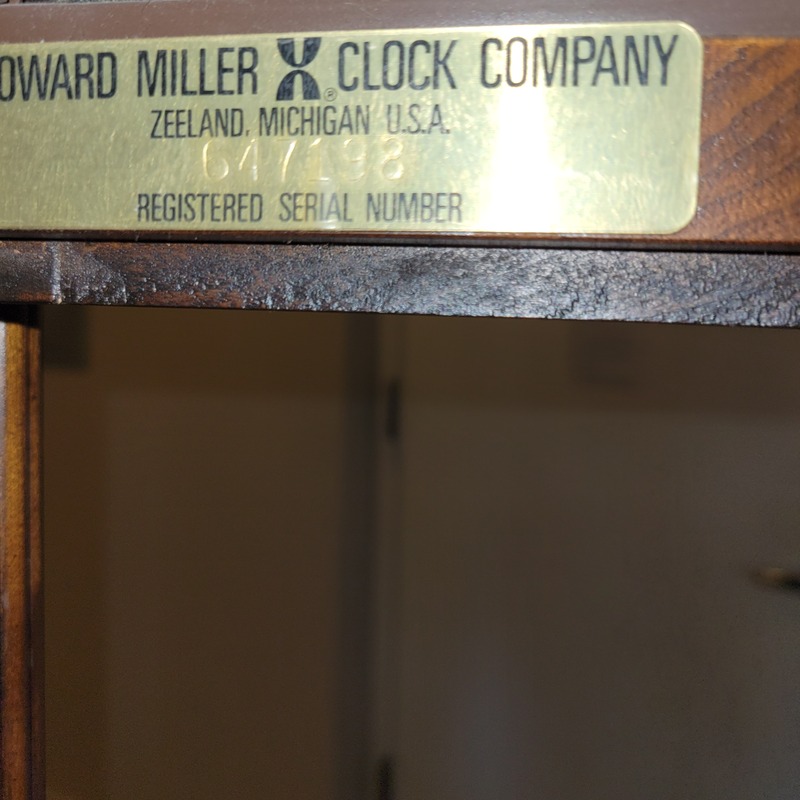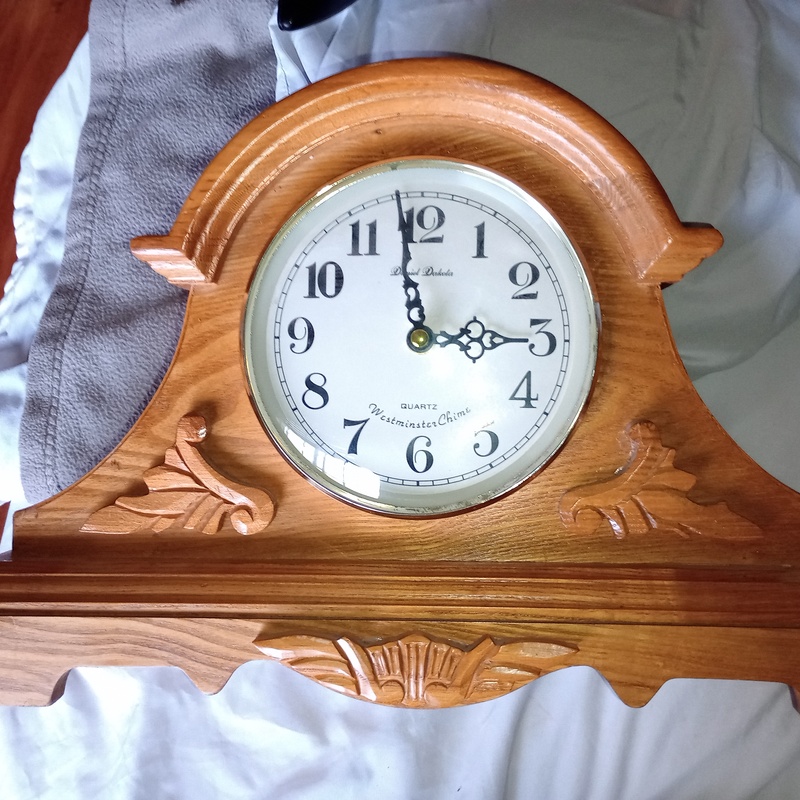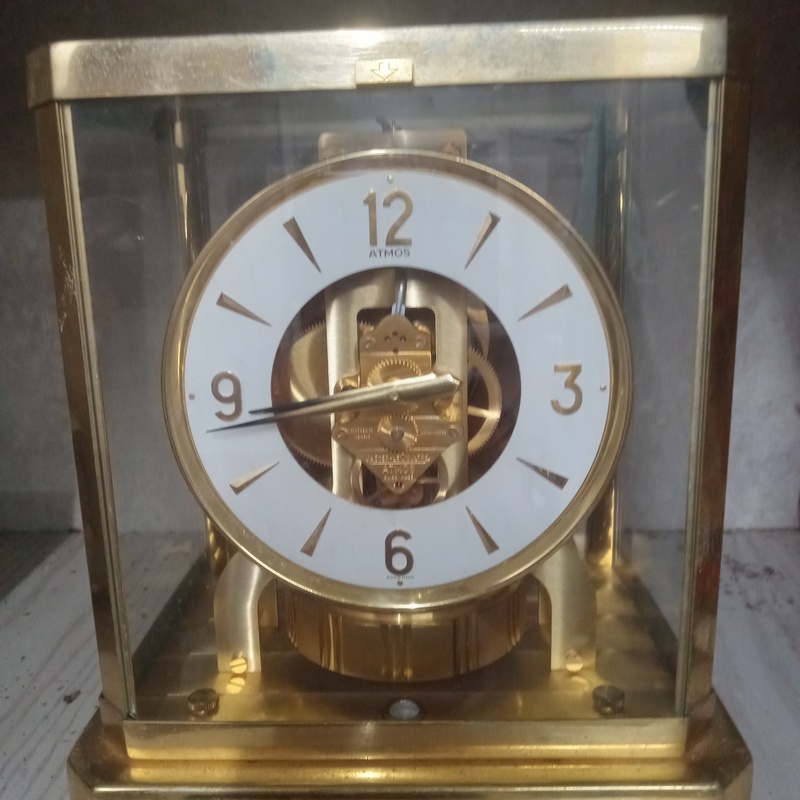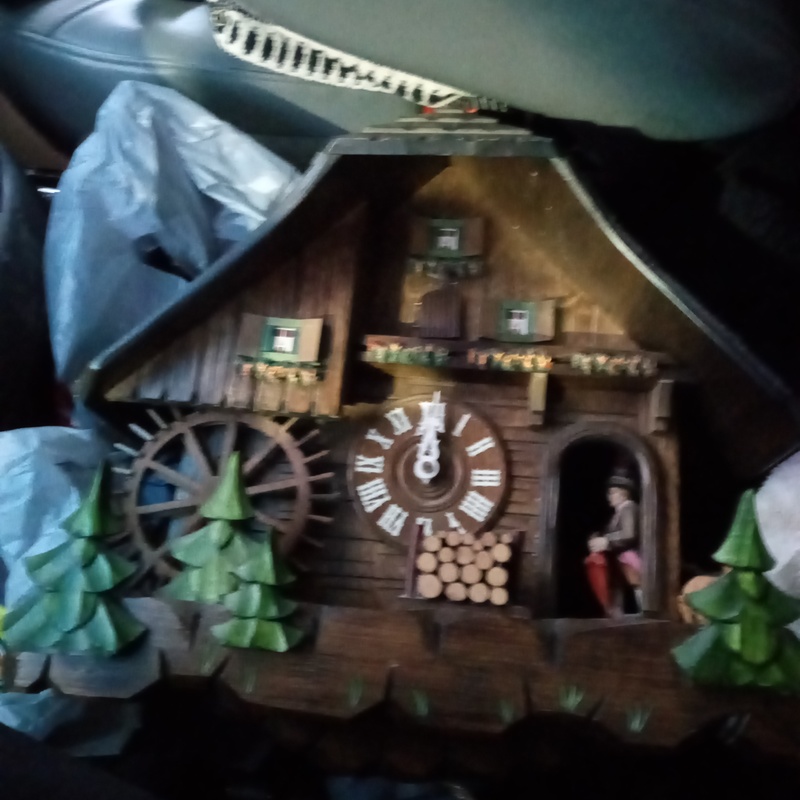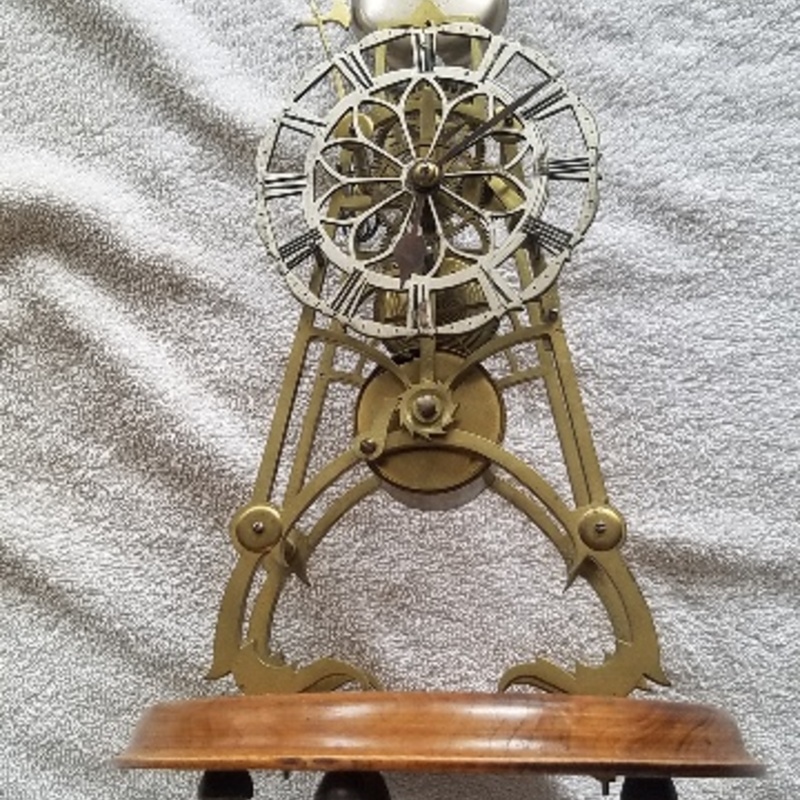






Skeleton clock,
Brass, unknown maker/age with dome on wooden platform. bell striker in shape of a pike. Approximately 12 inches high, pendulum, no key, fusee
My father owned it, where he got it from, unknown.
Inherited
Maybe


Hello David,
Thank you for sending in your skeleton clock to mearto.com for an appraisal. I shall try to help you with that today.
TITLE:
Brass, single chain driven fusee with passing hourly strike, skeleton clock using ‘scrolled-rafter’ construction, unsigned, made in England, circa 1860-1865.
DESCRIPTION:
CASE: Measuring 12" high, this is a two fenestrated brass framed skeleton clock roughly in a trapezoidal shape except at the base where it blossoms into a scrolled hemispheric shape resting on four brass ogival scrolled legs. the frames are connected with four brass tapered pillars cuffed at both ends and screwed with a round brass cuff at the front plate and colletted or screwed into the back plate. At the top of the rafter construction the frames narrow into a square with arched lower border enclosing the escape wheel with the silvered bell with its pike/axe shaped hammer (called a Halbert hammer head) just above. The bell is attached directly to the top of the brass frame.
The brass frame is secured to a round lightly stained oak base with a groove to accept the glazed dome. The dome sits over the clock and fits quite appropriately.The case rests on small button feet.
DIAL: Shaped and skeletonized, round, silvered hour chapter ring with black enameled Roman hours, open bar shaped minute ring with a convex scalloped border to the outside with a large central aperture to view the gearing. The dial center is open but decorated with a skeletonized rosette which provides stability for the outer part of the frame. There are steel English type Spade hands. The dial is unsigned.
MOVEMENT: The train of the movement, the motion work is placed in a vertical manner along the from with the spring barrel at the bottom the grooved cone shaped fusee just above and the escape wheel at the top with an anchor recoil escapement. (I cannot see the escapement clearly and those made prior to 1840 would often be dead beat types rather than anchor recoil). These clocks can have a duration of anywhere from one-two weeks to one month, the former being more common. The brass escape wheel most likely has its arbor connect4d to a coiled small spring which connects to the arm of the strike hammer. The metal pendulum rod hangs from the pendulum suspension at the top of the back plate and is pierced by the pin of the crutch with a brass adjustable bob at the base of the pendulum rod. The fusee is chain driven. The movement has a passing strike on the hour (which requires no second barrel spring-also called a fall-off strike), a feature frequently found on skeleton clocks.
CONDITION:
Case: Overall in very fine condition.
Dial: In excellent condition.
Movement: Very god and considered genuine, original and functional. Aesthetically, an interesting combination of simple rafter construction with a rococo swirl at the base of the clock frame indicating a transitional phase of rafter construction to a more ornate form. It is quite common for these clocks, often made by new clockmakers or apprentices to show their talent, not to be signed.
SKELETON CLOCK HISTORY:
The brass framed skeleton clock first appears in France in the mid eighteenth century. Famous makers such as Le Roy, Lepaute, Berthoud and Lepine manufactured these early clocks under a glass dome. England began production by 1820 producing a steady stream of these mantel clocks until they went out of fashion just before WWll. The English version utilized a fusee driven movement while the French clocks did not. In France the movements and cases had a far more ornate look and feel than the English varieties. In all these clocks the entire movement could easily be visualized inside the glass dome. The brass plates were narrow and frequently skeletonized so that the handiwork of the clock maker was readily seen. This style of clock reached its zenith during the second half of the nineteenth century, when there was a renewed interest in all things mechanical. This type of skeleton clock fit in perfectly with new age of industry and the value of technologic knowledge. There are essentially two major categories of this type of clock. There is the architectural style which frequently took the form of a cathedral, and the ornate style. The brass can be either cast or hand pierced. The bases were of marble, walnut mahogany or painted black with a velvet covered center. Generally, the glass dome either fit into a groove on the base or the base was "steeped" in such a way as to hold the glass dome firmly in place.
COMPARABLES:
https://www.liveauctioneers.com/item/77170083_english-fusee-spring-driven-skeleton-clock (sold in 2020 for $200 although there are movement issues here.)
https://www.liveauctioneers.com/item/63051433_an-english-brass-skeleton-clock-height-16-14-inches (sold in 2018 for $475)
https://www.liveauctioneers.com/item/50014915_english-brass-columnar-skeleton-clock-in-case (sold for $450 in 2017)
https://www.liveauctioneers.com/item/80355873_english-fusee-skeleton-clock (sold for $425 in 2020)
PRICING:
With its simple round wooden base I believe your clock, if placed into an auction in todays market, would have a fair market value of about $400-$450.
I hope you have found this appraisal informative and of some help to you in understanding your fathers English clock. Than you again for using mearto.com
My best,
David

